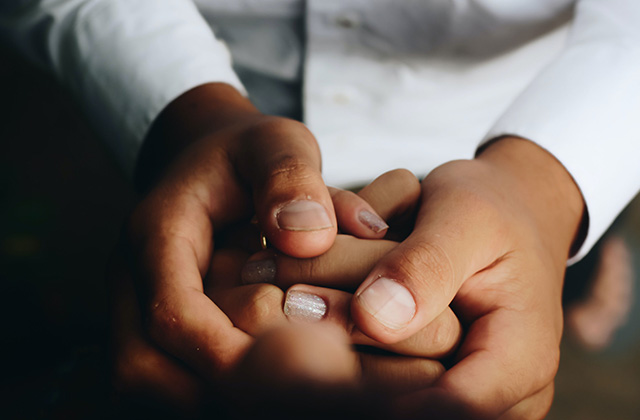A Home Health Aide’s New Normal

By Yanibel Fernandez
After arriving home from work, Eusebia Galvan, takes her shoes off at the entrance to her apartment and proceeds to the kitchen, where she removes her gloves and face mask, places them inside the sink, drops her keys, washes her hands, then places her purse and coat behind a couch, apart from everything else in her apartment. Then she walks directly to the bathroom to take a shower.
This has become Galvan’s ritual since the start of the COVID-19 pandemic. Galvan, 50, is a home attendant. She has adopted these measures to avoid contracting COVID-19 and infecting those close to her. “I have to take an elevator here [her apartment], where I’m in close contact with others I encounter on my way to work,” Galvan said in Spanish. “I walk to the apartment of my patient to take another elevator. Once I arrive there, I follow the same process of taking my shoes off and washing my hands.” The patient she currently takes care of is at a higher risk of contracting the COVID-19 due to his advanced age of 84.
According to the Centers for Disease Control and Prevention (CDC), “Older adults and people who have severe underlying medical conditions like heart or lung disease or diabetes seem to be at higher risk for developing more serious complications from COVID-19 illness.” The CDC notes “eight out of 10 reported deaths in the U.S. have been in adults 65 years old and older.”
Personal care aides — sometimes called caregivers or personal attendants — provide non-medical services. These include companionship, cleaning, cooking, driving, laundry and planning appointments. While they are not medical workers, they may do health-related tasks such as checking a client’s pulse, temperature, or respiration rate. Or they may help give medications.
To become a health home aid or personal care aid, a high school diploma or equivalent is required, and a training course must be complete to be certified. The average salary is $24,060 per year according to a U.S Bureau Labor of Statistics (BLS) report in May 2018. New York has 193,460 home health aides, according to BLS data in May 2017.
Many home health aides work in places like senior living facilities or nursing homes, places which have been hit the hardest by COVID-19, with an alarming number of deaths reported among residents. A total of 5,300 people have died in nursing homes due to the COVID-19, according to partial statewide data from the New York City Department of Health. The Bronx is second after Queens with the highest fatal COVID-19 cases, 266 confirmed deaths at nursing homes and 452 presumed COVID-19 deaths, as of May 25.
Unions such as 1199SEIU United Healthcare Workers East have dedicated a page with questions and answers to offer some guidance about COVID-19 to the 450,000 members the union has across states like New York, New Jersey, Massachusetts, and Washington, D.C. It covers COVID-19 related layoffs and furloughs, how workers can protect themselves, and workplace issues in a health care setting. The union demands that care workers have more access to personal protective equipment.
Recently Governor Andrew Cuomo announced in his daily morning briefings and via his Twitter account a new measure that nursing homes should take from now on. “All nursing homes staff must now be tested for COVID twice a week. This rule is not optional- its mandatory.” He issued an executive order directing, “Any personnel of a nursing home or adult care facility who refuse to be tested for COVID-19 pursuant to a plan submitted to the Department of Health shall be considered to have outdated or incomplete health assessments and shall therefore be prohibited from providing services to such nursing home or adult care facility until such testing is performed.”
Part of the execute order also says that patients who have being diagnosed with COVID-19 and who are sent back to their nursing homes should now stay at the hospital until fully recovered from the virus. “Hospitals shall not discharge a patient to a nursing home, unless the nursing home operator or administrator has first certified that it is able to properly care for such patient.”
